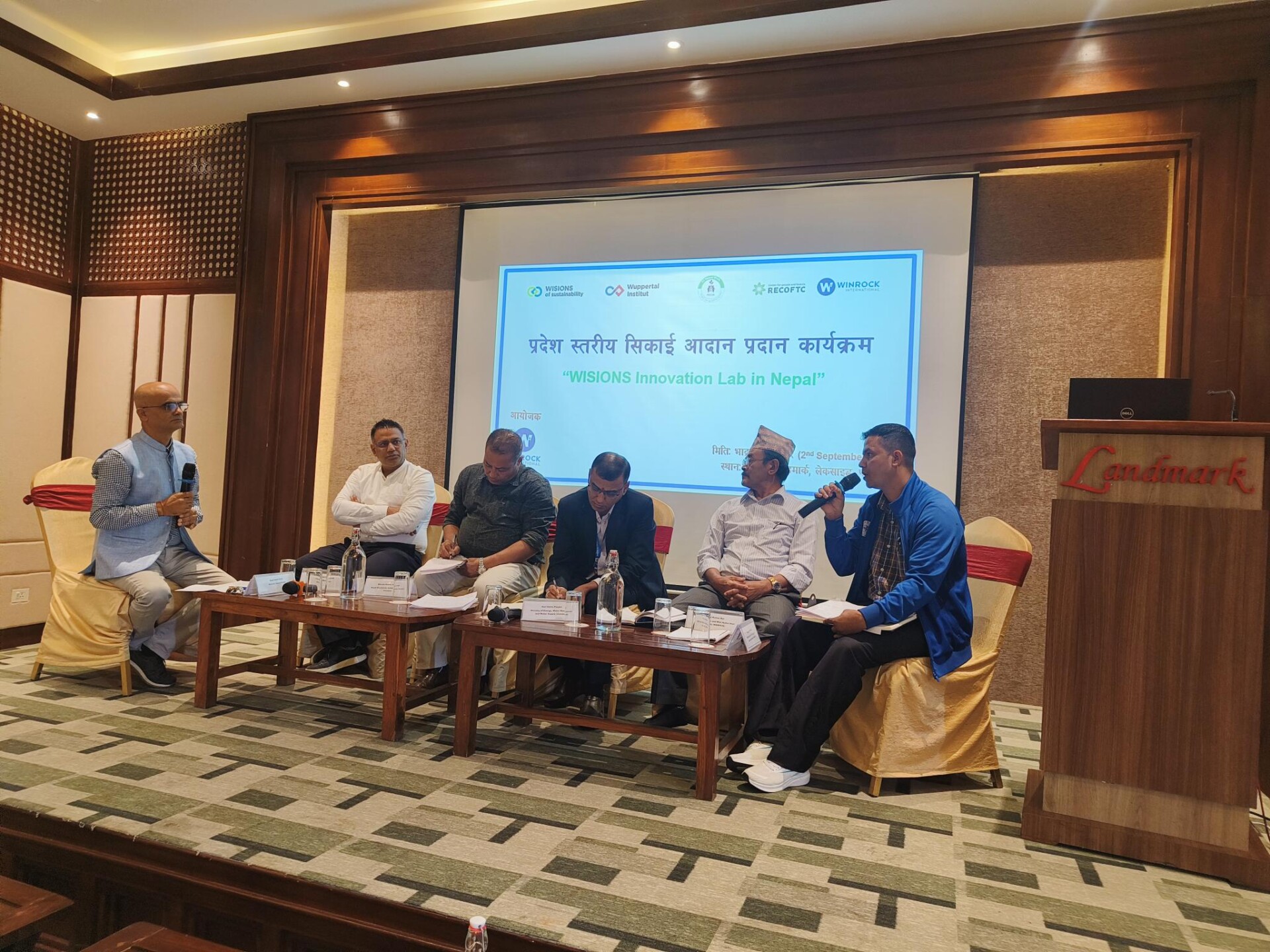A recent workshop in Pokhara brought together key stakeholders to explore how electric cooking, e-mobility, and micro-hydro grid interconnection can drive clean energy transitions in Nepal’s mountain regions.
Driving Clean Energy Transitions in Nepal’s Mountain Corridors
by: Nisha Jaishwal, Winrock International
How can locally generated electricity from micro-hydro plants help to transform rural mobility and cooking practices? How can e-cooking for small enterprises and schools boost economic self-reliance in mountain regions?
These questions were at the heart of a recent dissemination workshop held in Burtibang, Baglung on 6 July 2025, as part of the our Innovation Lab project in Nepal. The event brought together 46 stakeholders from municipalities, transport cooperatives, micro-hydro plant (MHP) cooperatives, schools, local enterprises, and community forest user groups to explore the findings of two studies conducted under the Innovation Lab:
- A pre-feasibility study of electric mobility in the Galkot–Badigad–Nisikhola corridor
- An assessment of electric cooking solutions in small and medium enterprises (SMEs) and schools in Baglung District
The event was organized by Winrock International Nepal, in collaboration with PEEDA, RECOFTC Nepal, and the Wuppertal Institute, and served as to facilitate dialogue among the different stakeholders, gather feedback, and catalyze inter-municipal cooperation for a just and resilient energy transition.
Resilient Landscapes Through Electric Vehicle and Electric Cooking Solutions
In the opening session, Mr. Bhimsen Ban, Vice Chairperson of Badigad Rural Municipality, emphasized the opportunity to harness underutilized electricity from existing MHPs to support electric mobility and e-cooking. He called on the seven municipalities in the region to jointly invest in enabling infrastructure such as charging stations and safe wiring while promoting behavioral change through awareness and training.
Dr. Shritu Shrestha of the Wuppertal Institute outlined how poor infrastructure, limited financing, and fragmented standards continue to hamper EV uptake. Still, she noted that Nepal’s growing hydropower base offers a strategic entry point to advance rural e-mobility and reduce harmful air pollution.
Findings from the Field
Winrock International presented the pre-feasibility study on electric mobility, which proposed the deployment of 11–14-seater electric vans and 26–30-seater e-buses tailored for local travel patterns. Financial analysis showed that despite higher capital costs, electric vehicles (EVs) offer better returns and lower operational costs than their diesel counterparts.

Meanwhile, PEEDA presented insights from a pilot study on e-cooking among 51 SMEs and 3 schools. Results highlighted high LPG dependence, poor household wiring, and skepticism around electricity reliability. However, through targeted subsidies and demo sessions, 20 SMEs and 2 schools successfully transitioned to electric cooking, reporting monthly fuel savings and cleaner kitchens.
Group Work
In a following discussion, the participants reflected on the studies and shared the most important aspects of these two issues from their perspectives. Potential e-cooking user groups, such as hotel managers and community forest user groups, stressed the need for subsidies to support the initial investment in utensils, as well as improvements in wiring and access to local repair services. Transport investors, MHP operators, and local transport committees noted a strong alignment between EV deployment and the productive use of MHP electricity. They proposed Public-Private Partnership (PPP) models, local operation of charging stations, and the standardization of routes and vehicles. Local governments expressed their readiness to facilitate coordination, provide incentives, and support planning – recognizing that these clean energy pathways can enhance economic resilience and public health.

A Model for Inter-Municipal Collaboration
In his closing remarks, Mr. Jiblal Kharel Jiwan, Mayor of Musikot Municipality, emphasized the role of local governments as enablers of the energy transition. He noted that these studies provide an evidence-based roadmap and called for collaborative implementation of clean energy projects across municipalities along the Daram and Badigad river corridors.
What’s Next?
The dissemination workshop in Baglung highlighted the Innovation Lab’s integrated approach: placing local capacities and institutions at the center, while fostering synergies between renewable energy and sustainable landscapes. With strong local ownership and inter-municipal interest, this corridor could emerge as a model for decentralized energy transitions in Nepal and other mountainous regions.
On 25 July 2025, a significant milestone will be reached as all seven local governments in the Galkot–Badigad–Nisikhola corridor formally sign and endorse the Operational Guideline and Annual Work Plan for the Coordination Committee of the Local Government Forum, developed under our project. These documents now officially owned by the municipalities will serve as guiding tools to steer joint planning, shared implementation, and sustainable coordination moving forward.
We extend our heartfelt thanks to all participants and local partners who made this event possible.


